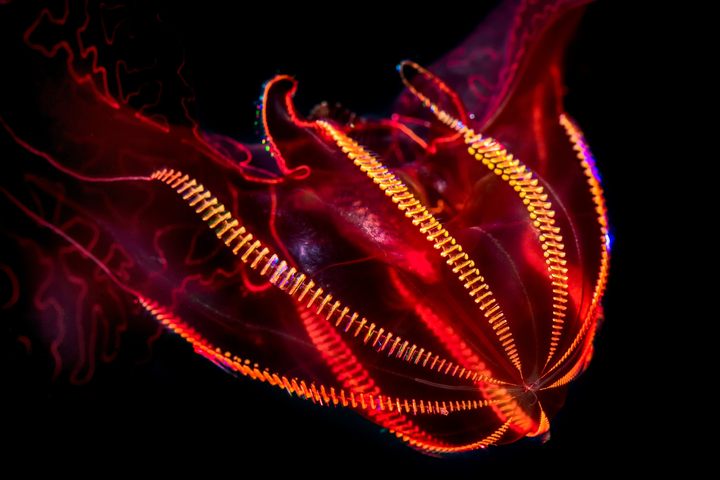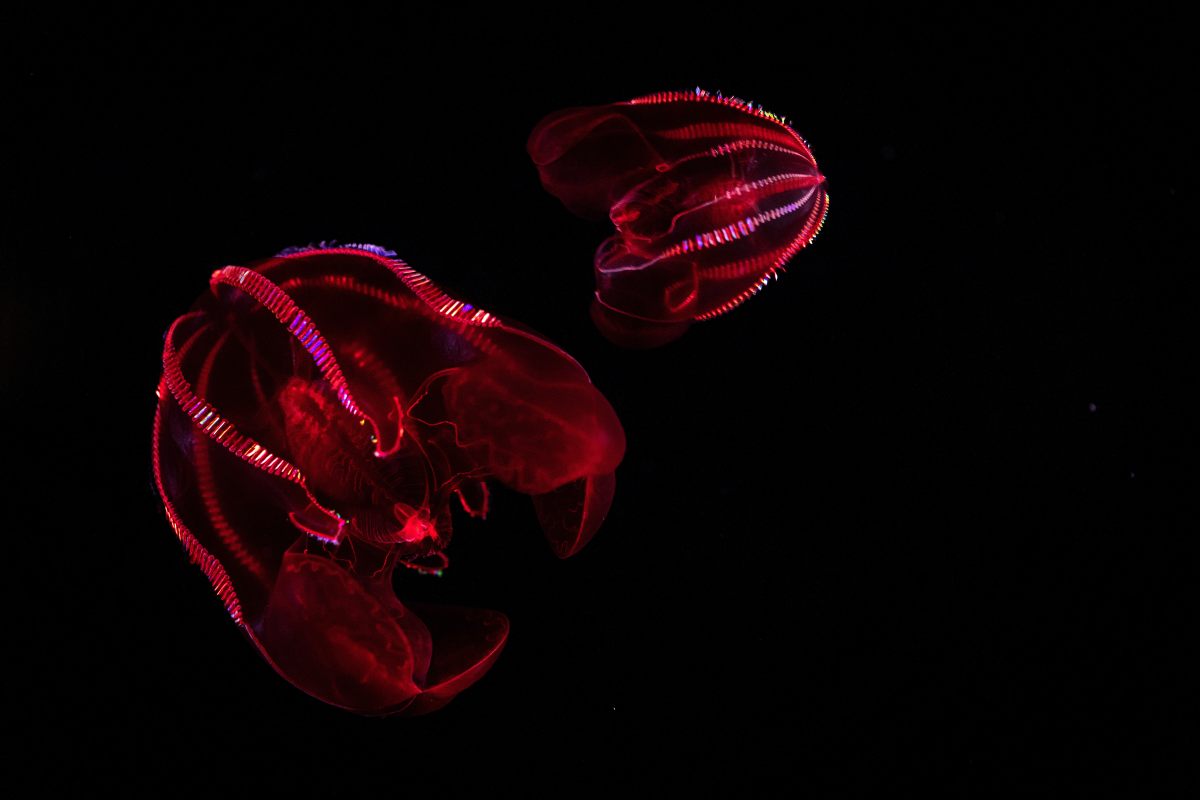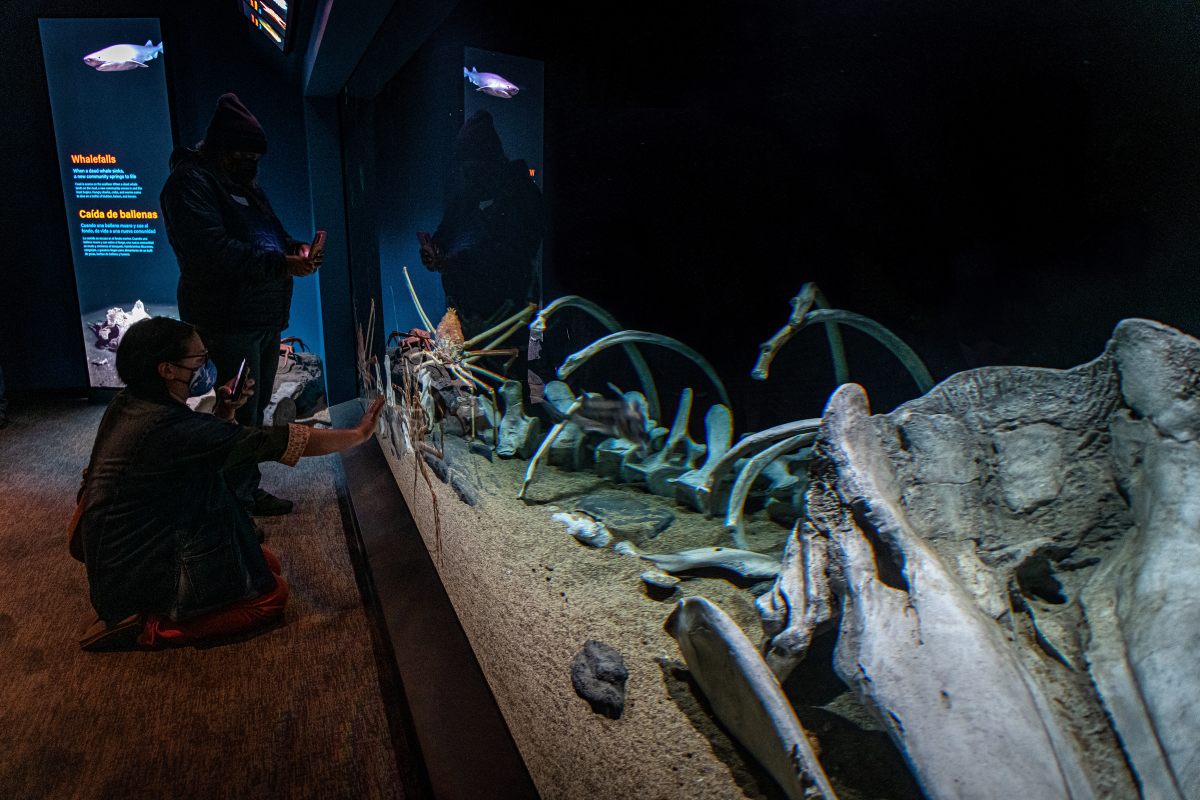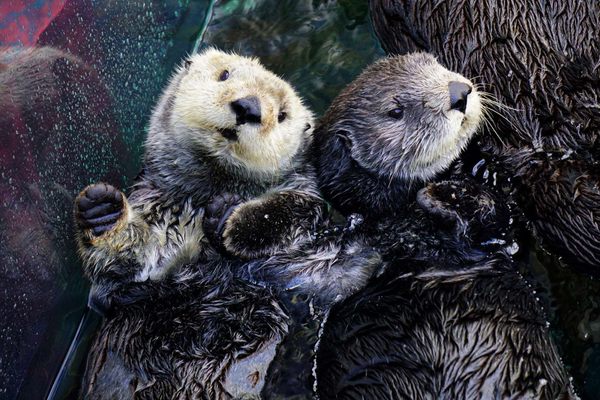
Into The Deep: The Journey to Bring Amazing Deep Sea Animals to the Surface
The Monterey Bay Aquarium displays vibrant jellies, fascinating fishes, and the largest crab in the world.
Far, far below the surface of the ocean, stretching deeper than sunlight can penetrate, deeper at points than Mount Everest is tall, is the largest and most mysterious ecosystem on the planet: the deep sea. The water there is nearly freezing, the pressure enormous. Light is either scarce or completely absent. For much of human history, this punishing environment was thought to be completely devoid of life. It’s only in the last century and a half that scientists have realized the opposite: There are likely more animals down there than there are on land – creatures like bioluminescent fishes, transparent jellies, and crabs that can stretch 12 feet from claw to claw.
And now, after years of research and experimentation, the Monterey Bay Aquarium is presenting these captivating denizens of the deep sea, many on view for the first time ever, in their blockbuster exhibit Into The Deep/En Lo Profundo. (The exhibit is the aquarium’s first ever to have an accompanying fully bilingual online experience.) We spoke with Paul Clarkson, Director of Husbandry Operations at the Aquarium, about the hard work that went into bringing this enigmatic world to the surface.

As Clarkson explains it, the project of developing Into The Deep started not just years but decades ago. “I almost think about it as nearly a 30-year R & D project,” he says. The story starts back in the ‘90s, when the Monterey Bay Aquarium (working with its sister institution, MBARI – the Monterey Bay Aquarium Research Institute)– created a smaller deep-sea gallery. That exhibit showed only animals from the twilight zone, an area of minimal light stretching from 660 feet to 3,300 feet below the ocean’s surface. The show was a success, and it inspired scientists to discover, care for, and exhibit animals that live even deeper, in the ocean’s midnight zone.
To collect these animals, MBARI doesn’t have to go far: Monterey Canyon, which begins in Monterey Bay and stretches 250 miles out to sea, is one of the largest underwater canyons on the West Coast. With such easy access, MBARI has discovered more than 200 species, and some – including some on display in Into The Deep – that are so new that they don’t even have scientific names yet. The MBARI team includes academic scientists who collect and study animals, and as Clarkson explains, “they have a significant amount of understanding of these animals and what makes them tick in the wild. But they don’t entirely understand what it means to bring one of those animals up to the surface and keep it thriving.” That’s where the Aquarium staff comes in. It’s the job of Clarkson and his Animal Care colleagues to find ways to care for and cultivate these animals in an aquarium environment.
This is no easy task. It turns out that many deep-sea animals used to crushing water pressures can thrive at surface pressure once acclimated, but almost all other aspects of their environments have to be carefully managed. Their water has to be kept extremely cold, oxygen-poor, and the proper pH. Care has to be taken to make sure the animals never encounter hard surfaces, because many have gelatinous, wet-tissue like bodies specially evolved for a world with crushing water pressure but no hard surfaces. If they came into contact with the walls of the tank, they would simply disintegrate on contact. In order to care for animals adapted to live in an extreme environment, the Monterey Bay Aquarium has developed cutting-edge technology used nowhere else in the world. This means that for the first time, people other than scientists and James Cameron are able to see these animals up close.

One of the animals that has never before been exhibited in an aquarium in the United States is the stunning bloody-belly comb jelly. These small jellies are red – but because red light doesn’t filter down to the depths at which they live, they appear nearly invisible to their predators. The species was first described 20 years ago by Dr. George Matsumoto at MBARI. According to Clarkson, Matsumoto didn’t have high hopes that the Monterey Bay Aquarium team would be able to maintain the bloody-belly comb jelly in a live exhibit. “It’s too challenging,” Clarkson explains the thinking, “Its needs are just too alien for us to figure out.” But the Aquarium did figure its needs out, and has been “hugely successful” at keeping them alive.
The Aquarium’s plans for Into The Deep were ambitious and it hasn’t yet gotten to everything on its wishlist. One example concerns the whalefall display. “Whalefall” is the term for the temporary ecosystem that springs up when a whale dies and its body sinks to the bottom of the ocean, providing abundant nutrients for scavengers ranging from worms to sharks. Because a real whale carcass would be too difficult to manage, the whale skeleton in the exhibit is artificial, molded off a real juvenile sperm whale skeleton, Clarkson says. But the Aquarium also wanted to show visitors what a real whalefall looks like. “So we were actually permitted by both state and federal agencies to harvest a floating whale carcass in the Bay if we found one during the development of the show.” Their hope was to sink that carcass into the deep sea, put cameras on it, and allow visitors to watch as it was consumed. Unfortunately, no whale carcasses have washed up yet, though the Aquarium hopes to document a whalefall in the future.

In the meantime, seeing the creatures in Into The Deep in the flesh is thrilling, even surprising. Take, for instance, the giant isopod. Basically a massive, underwater version of a roly-poly bug, these scavengers grow to a football-sized 16 inches long. And at the Monterey Bay Aquarium, visitors can pet them. But how do the isopods feel about that?
“It’s pretty hard to ascertain the emotions of a deep-sea giant isopod,” Clarkson laughs. He explains that isopods spend most of their time sedentary, “stuck in a hole somewhere or something like that,” going months or even years between meals. So they’re not exactly demonstrative creatures. “It’s hard to get a rise out of them, so to speak,” he says. The Aquarium does make sure the animals are healthy and thriving, and regularly rotated out of the touch tank. But it seems like the isopods don’t mind some gentle touching.

One of the most extreme animals in Into The Deep, the Japanese spider crab, spends its days hanging out on the model whalefall. This crab is skinny, enormous, and mostly legs; its carapace, or shell, measures up to a foot long, but its legs can span up to 12 feet.
Because food is scarce in the deep, mostly limited to whatever dead thing sinks down from above, Japanese spider crabs conserve their energy by spending long stretches of time, well… not doing anything. “I will often walk up to the spider crab exhibit, and I see visitors walk up, and they actually think [the crabs] are not alive,” Clarkson says. “And then there will be some sort of subtle movement and you’ll actually see people jump back and [say], ‘What?!’ Because the thing is so large and so alien looking, it’s like people don’t even believe that it could be a real thing. And then they see it move its arm a little and they’re just kind of blown away.”
About the only time there’s a flurry of activity involving the Japanese spider crabs is when one of them begins the process of molting, or shedding its exoskeleton in order to grow. When a crab shows signs of molting, it’s moved to its own private behind-the-scenes area to protect it, because as Clarkson explains, “a molting crab is like a seafood buffet to just about any other predator out there.” Such predator-and-prey consideration was part of the thorough planning of Into The Deep: “If an animal’s gonna gobble up its roommate, then, you know, simply don’t put them together.”

Central to the purpose of Into The Deep is not just raising awareness that these never-before-displayed creatures exist, but raising awareness of the environmental threats they face. Though humans live far away from the deep sea, microplastics have been found in staggering amounts on the seafloor and in the tissues of the animals that live there. Extractive industries like drilling, seabed mining, and fishing damage fragile ecosystems that can take a century or more to recover. Climate change and the burning of fossil fuels means that the ocean is getting warmer, throwing it out of whack in myriad ways. These threats to the deep sea’s health are especially worrisome because the deep sea is essential in trapping carbon, thereby regulating the climate of the entire planet.
Into The Deep/En lo Profundo opened in April 2022 and it continues to evolve as MBARI and the Monterey Bay Aquarium make new discoveries and scientific advancements. New animals are constantly being added to the exhibit as MBARI collects them, and the husbandry staff continue to try to find ways to culture new species. High on Clarkson’s wish list for the Aquarium are deep-sea cephalopods, including the flapjack octopus, which he calls “one of the cutest critters on the planet.” He doesn’t consider any hard-to-care-for animal a hopeless cause; instead he says, “we just haven’t figured it out yet.”
This post is sponsored by the Monterey Bay Aquarium. Learn more about how you can help protect the ocean.



















Follow us on Twitter to get the latest on the world's hidden wonders.
Like us on Facebook to get the latest on the world's hidden wonders.
Follow us on Twitter Like us on Facebook